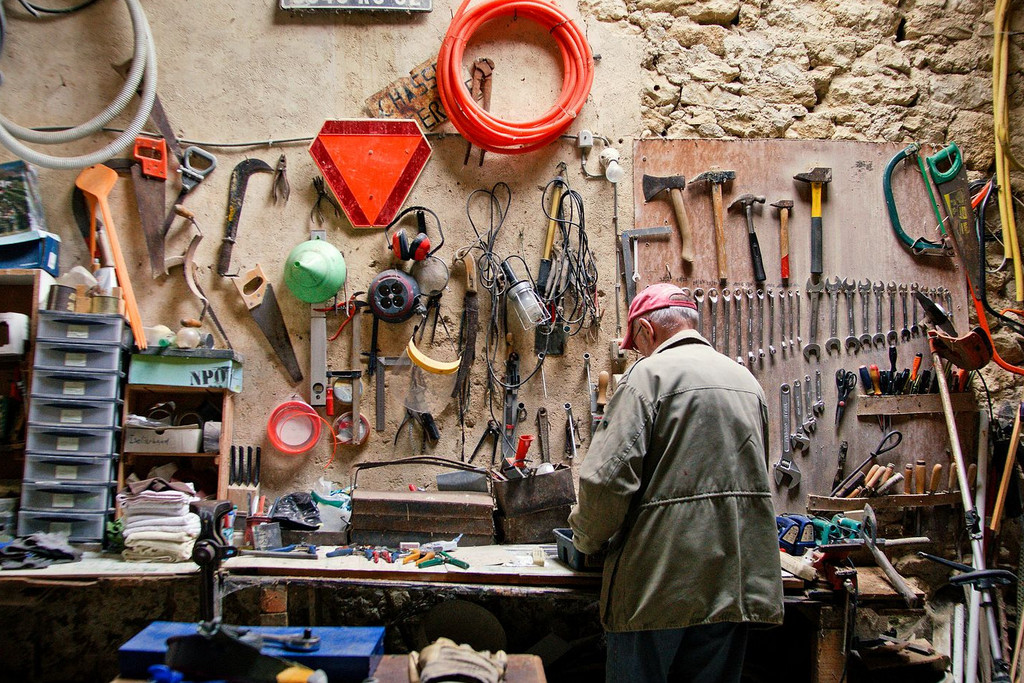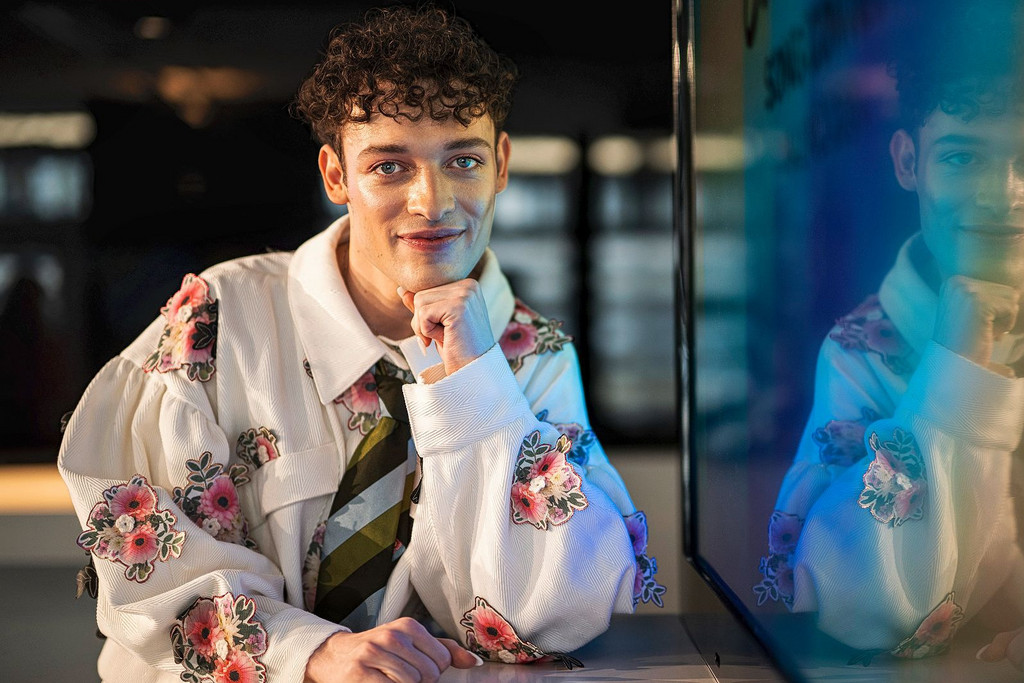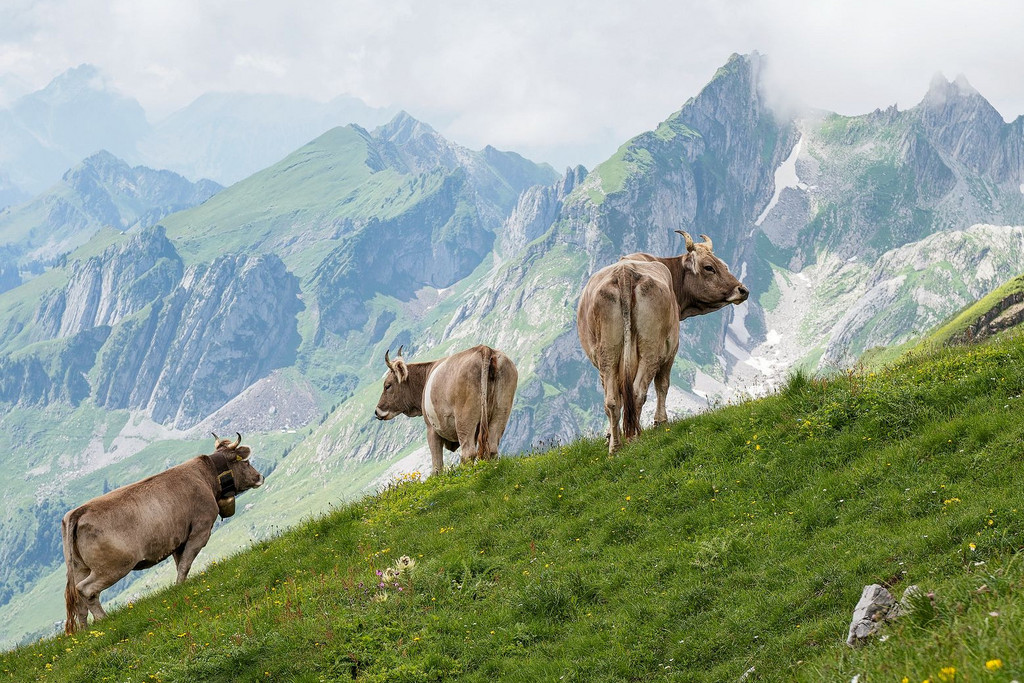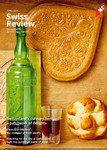It’s a strikingly simple instrument. “A pipe with a conical horn that widens out,” as musician and artist Balthasar Streiff succinctly describes it. Originally from Glarus but now living in Basel, he performs on an array of wind instruments, from the büchel – a coiled horn – to the simple cow horn. He has been touring for many years, playing the alphorn as a member of the Hornroh Modern Alp Quartet, a group mixing jazz, traditional music and contemporary music. He also fuses the alphorn with electronic music in his Alpin Project, with a DJ adding drum and bass beats.
Yet Balthasar Streiff does not entirely go along with the idea of the alphorn’s ‘Swissness’. “Ninety-nine per cent of people who play the alphorn are not shepherds or farmers: they are city-dwellers,” he laughs, suggesting perhaps that there is little substance to the popular myth. He reinforces his point with a reminder that most compositions for the instrument date from the second half of the 20th century. “Two hundred years ago, the ancestor of the alphorn was played throughout the world. Farmers blew on a stem or a horn to call in the livestock at the end of the day. The alphorn that we see today – and that the Japanese love and play – was developed in the 19th century, when nationalists promoted folklore for political reasons.”
“Smoke on the Water” played on the alphorn
Be that as it may, the sound of the alphorn “evokes images of the Alps”, according to Laurent Aubert, director of the Ateliers d’ethnomusicologie in Geneva. “When you hear it, you can imagine that you are in the Rütli Meadow, and all Swiss people, even Genevans, associate it with the Alps.” A number of musicians play on this emotional bond. Among them is Eliana Burki, who can be found in the archives of Swiss broadcaster RTS performing “Smoke on the Water” in Grindelwald. The musician from Solothurn has toured the world with her alphorn, which is modified in the style of a trumpet. She began playing the alphorn at the age of six and said that she hated performing in traditional costume. She is now on the US record label Surf Dog. She plays in a band whose name reflects the attachment to the myth: I Alpinisti. “The sound of the alphorn is unique in the world,” she says.
In Château-d’Oex, the musicians who make up the band Sonalp, formed in 1999, have also introduced the alphorn into their repertoire, after starting out playing a new genre, Swiss world music. At the beginning, the band included a didgeridoo among its instruments. “It was a way for us to bring Oceania into our music,” explains violinist Guillaume Wahli. Next came a customised alphorn, with a series of nozzles added to make it easier to play. The group is currently recording its fourth CD, on which the traditional alphorn will feature strongly. The musician from Sonalp also enthuses about the “strong identity of the sound, which is associated with Switzerland”, while at the same time admitting that it is difficult to play the alphorn given the instrument’s natural limitations.
“The alphorn is a voice without words”
In fact, it is the alphorn’s boundaries that make it such a powerful and fascinating instrument, according to Balthasar Streiff. “It’s a simple instrument that requires a lot of inventiveness. It’s unlike anything else we know.” Streiff, who has adopted Basel as his home town, praises the alphorn for its sonorous sound, while playing down the – some would say, kitsch – image of the instrument. “The alphorn has a beautiful resonance in streets of towns and cities. If you play it in the forest, people are attracted – and even animals come to listen. The alphorn is a vehicle for many emotions and works like a voice without words.”
Hans Kennel, a jazz trumpet player from central Switzerland, was the first to use the alphorn in a modern repertoire. At the time, it was revolutionary, remembers the musicologist Laurent Aubert, who in 2013 invited the two musicians to play at an event dedicated to the music of the Alps and to the new directions it is taking.
Stéphane Herzog is a journalist with the “Swiss Review”.
Picture Eliana Burki plays her alphorn in a modern style – and hates performing in traditional costume… Photo Eva Müller











Comments
Comments :
Eliana Burki on alphorn with Desert Bridges live in Qatar www.cdbaby.com/artist/DesertBridges.
Facebook - desert bridges
What a joy therefore, when I discovered that my Swiss friend, Daniel Meyer, would play his Alphorns in concert with the blues bands during Blanket & Blues concerts on his rustic Swiss inspired Barron’s CreekSide getaway and at The Club on his resort in the Texas hill country.
The sounds of the Alphorn awakens recollections of my brother’s fantastic alp and summer life high above the Rhein river in Graubuenden and many festivals in Switzerland. But more so, it is a pleasure to hear the Alphorn blend or lead when playing together with other instruments. It’s unique sounds deliver memories and just good music to the ear and heart.
Ich möchte nur zwei Beispiele nennen: Hackbrett = Nicolas Senn, oder Geige = Star-Geiger David Garrett. Was das für Virtuosen sie doch auf Ihrem Instrument sind!
Wenn schon solche Musik, dann bediene ich mich eines Saxofons.
Es Grüsst Charles
www.alphornduo.at